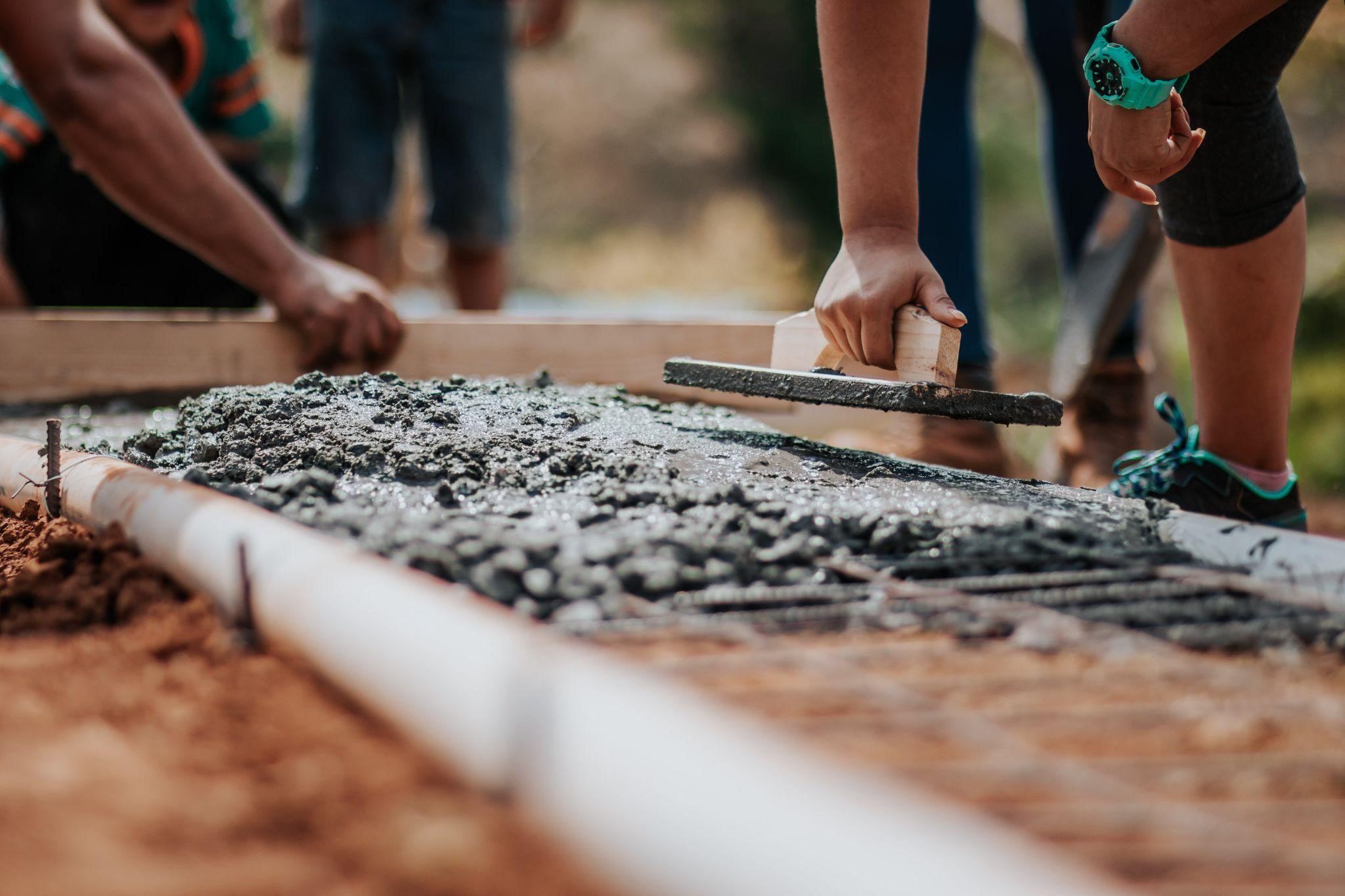The lime columns technique is a version of subsoil mixing during which unslaked hydrated lime gets used instead of or in addition to cement. The lime columns are best suited for stabilizing extensive soft clay deposits.
A pozzolanic reaction occurs between lime and the clay minerals, resulting in a significant increase in strength and a decrease in elasticity of the native substance. The heat produced by quicklime hydration (https://www.scienceforums.net/topic/83709-heat-energy-production-by-quicklime-and-water/) decreases the water content of clayey soils, leading to rapid consolidation and strength increase. Lime columns can also be used for load support, slope stabilization (natural and cut), and excavation support.
Soft clays and silts may be stabilized by adding and mixing quick lime, cement, or a mixture of the two in situ. In-situ mixing improves soil shear strength significantly via a variety of favorable impacts, including:
The exothermic interaction of lime and/or concrete with soil water lowers soil moisture content, resulting in increased strength. Ion transfer from sodium to calcium in clay chemistry leads particles to agglomerate, increasing permeability.
Calcium in lime has a cementitious function.
As a result, a succession of columns with improved shear strength and permeability is formed. Column thicknesses in excess of 500mm and depths in excess of 15m are readily achievable. Lime concrete is a mixture made up of type S lime as the binding agent, sand as the fine and coarse aggregates, and gravel as the coarse aggregate in the proper proportions. The lime concrete mix ratio varies depending on the kind of building, but in general, it may be up to a 1:2:3 ratio for lime, sands, and coarse aggregate.
Lime Concrete Proportioning
The aggregate to lime cement proportions must be done by volume.
In general, lime is made by combining 100 parts of 40 mm nominal diameter graded rock aggregate, gravel, or stone aggregate and 40 parts of the prescribed lime mortar mix.
Lime Concrete Mixing
A mechanical mixer must be used to mix lime concrete. Hand mixing is permitted in extreme cases. Before blending, brick aggregate should be well wet for at least 24 hours, and rock aggregate and gravel should be thoroughly wet to eliminate dirt, dust, or other foreign elements.
Mixing by Machine
Pour the measured amount of coarse aggregate plus wet ground mortar into the mixer’s drum while it is rotating to mix. The number of materials placed in the barrel must not surpass the rated capacity of the mixer.
The water shall be progressively added up to the needed amount, and the wet mixture of a batch should be maintained in the drum for at least two minutes, until concrete of uniform color, evenly dispersed ingredients, and consistency is formed.
The lime concrete’s consistency must be so that the cement does not separate first from the coarse aggregate. When there is division after removing the concrete from the mixer, it should be eliminated.
Before the components for the fresh batch are placed into the drum, the whole batch of concrete must be released. Before stopping operation, the mixer should be cleaned by turning the drum several times with lots of water.
Mixing by hand
When hand blending is particularly authorized, it must be done on a clean, waterproof masonry platform large enough to offer an ample mixing area. For more detailed instructions on hand-mixing concrete, click here. On top of the aggregate, the prescribed wet lime mortar must be put. Turning must be done many times with the injection of the needed amount of water until a homogenous mix of the desired consistency is formed. The lime concrete’s consistency must be so that the mortar does not separate from the concrete mixture.
Compaction and placement
While the lime concrete is still new, it should be put in layers. Before placing the next layer of lime concrete, each layer must be firmly rammed and solidified. Each layer’s total thickness should not surpass 15 cm. Unless otherwise indicated, joints should be staggered at various levels. Ramming should be maintained until the skin of cement fully covers the top of the poured lime concrete.
Concrete put on a certain day must be properly solidified that same day just before the job is halted. Coverings must be used to protect newly installed concrete from rain.
What exactly is lime concrete?
Lime concrete is a mixture made up of lime as the binding agent, sand as the cement content, and gravel as the coarse aggregate in the proper proportions.
What is the lime concrete mix proportion?
The lime concrete mix ratio varies depending on the kind of building, but in general, it may be up to a 1:2:3 ratio for lime, sand, and coarse aggregate.
What qualities does lime concrete have?
Lime concrete has the following properties:
- It is easy to work with and has the appropriate plasticity.
- It reduces subsurface wetness owing to its waterproofing characteristic.
- It is resistant to weathering.
- Bases made of lime concrete can withstand heavy weights.
- More time is required for the setup. It has a much better compressive strength somewhere at the beginning of the setting process.
- Lime concrete is more ecologically friendly than ordinary cement because it uses less energy to produce lime and generates less carbon dioxide during the carbonation process.


